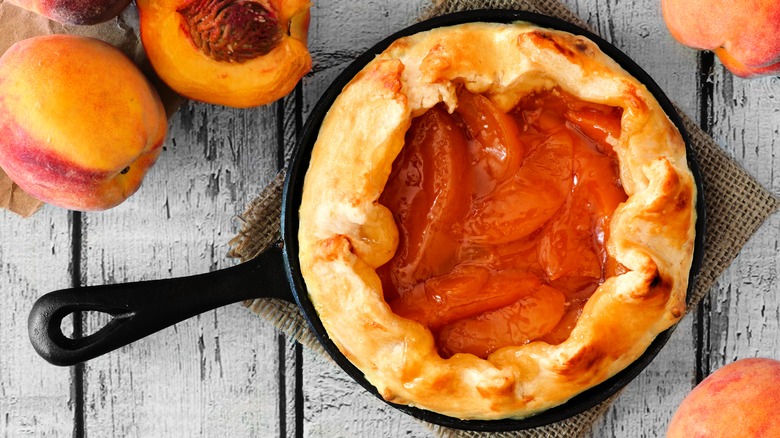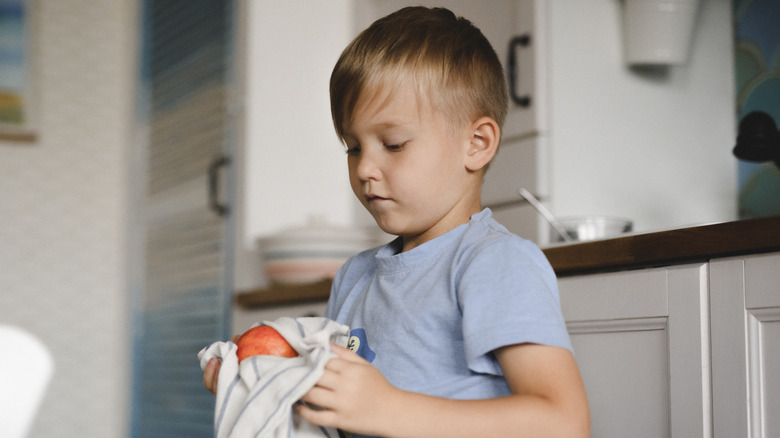The Essential Step You Can't Forget When Baking With Canned Peaches
When it comes to fruit, everybody knows that fresh is best. But while canned fruit has a bad reputation, there are applications where they're not just acceptable, but actually preferable. When it comes to peaches, their prime growing season is relatively short, and the shelf life of picked peaches is more inclined towards brevity than most. And that's assuming that you can get peaches from the trees to your kitchen without bruising the fragile flesh.
If you want replicable results every time, cooking with canned peaches is always a reliable option. Canned peaches will come moist, flavorful, uniformly sliced or halved, and basically as fresh as the day they were picked. Plus, you won't have to worry about pits or serious imperfections, as these things will have been removed during the canning process. That being said, not everything in the can should be going into your delicious baked peach recipe.
Before you use your canned peaches for baking, you need to do three things to them. Most people know that you need to drain the liquid from your canned peaches. Whether it's water, juice, or heavy syrup, it needs to go (and canned fruit liquid can always be set aside for use elsewhere). Some people will remember to rinse those canned peaches in a sieve. But the essential step that too many forget when baking with canned peaches is to dry the rinsed canned peaches before cooking with them.
Why you need to dry your canned peaches before baking
Whether you have rinsed your canned peaches or just drained them, those peaches are going to have a lot of excess moisture on them. While the fruits themselves will be juicy and that liquid will come out while it cooks, you want to minimize the liquid that's on the outside at the start. Excess moisture on your peaches when you're adding them to your baked goods can produce results that are short of perfect. Not drying your canned peaches can lead to pie fillings that are too watery, which in turn can have a negative effect on pastry crusts by making them wet so that they don't brown properly.
To combat this, dry your peaches as best you can. Ideally, you want to let the peaches rest on a cooling rack with the outside exposed to the air for a few hours after being rinsed. If that's not feasible, the drying time can be cut down to an hour or two by putting them on a rack in the fridge. If you're really pressed for time and can't leave your canned peaches sitting for a long time, after you've rinsed them you should at least pat them dry with some paper towels before you start to bake. It won't do as much as air drying, but it will mitigate the issue enough to ensure that your filling won't be too watery and your crust won't get soggy.

